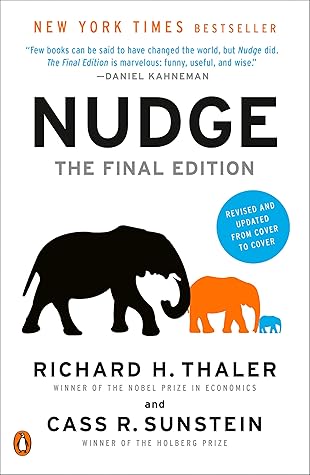More on this book
Community
Kindle Notes & Highlights
A choice architect has the responsibility for organizing the context in which people make decisions.
The paternalistic aspect lies in the claim that it is legitimate for choice architects to try to influence people’s behavior in order to make their lives longer, healthier, and better. In other words, we argue for self-conscious efforts, by institutions in the private sector and by government, to steer people’s choices in directions that will improve their lives.
A nudge, as we will use the term, is any aspect of the choice architecture that alters people’s behavior in a predictable way without forbidding any options or significantly changing their economic incentives.
Nudges are not taxes, fines, subsidies, bans, or mandates. Putting the fruit at eye level counts as a nudge. Banning junk food does not.
In those worlds, the ultimate success or failure of songs depended strongly on whether they attracted initial popularity.
The Checklist Manifesto, surgeon Atul Gawande
Just ask for “omakase” and you will eat well. If there are things foreigners often dislike, the chef will sometimes ask, “Are you sure you want the uni?” That is personalized omakase.
Don Norman’s wonderful book, The Design of Everyday Things,
any aspect of choice architecture consisting of friction that makes it harder for people to obtain an outcome that will make them better off (by their own lights).
The ink cartridges are an example of what behavioral economists Xavier Gabaix and David Laibson call “shrouded attributes.” 5 The headline price of the good understates the true cost to the user because the shrouded attributes, and their costs, are hard to discover.
But we are confident that the worldwide costs of airline security checks are underestimated because they are not monetized, which is often the case for sludge.
Don’t Sweat the Small Stuff . . . and It’s All Small Stuff.
make the green option the easy option.
publicity principle.16 In its simplest form, the publicity principle suggests that no choice architect in the public or private sector should adopt a policy that she would not be able or willing to defend publicly.


